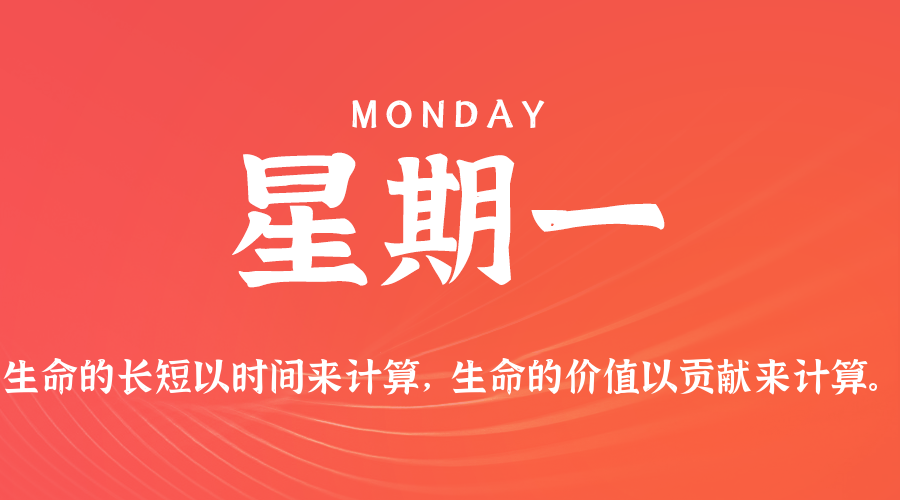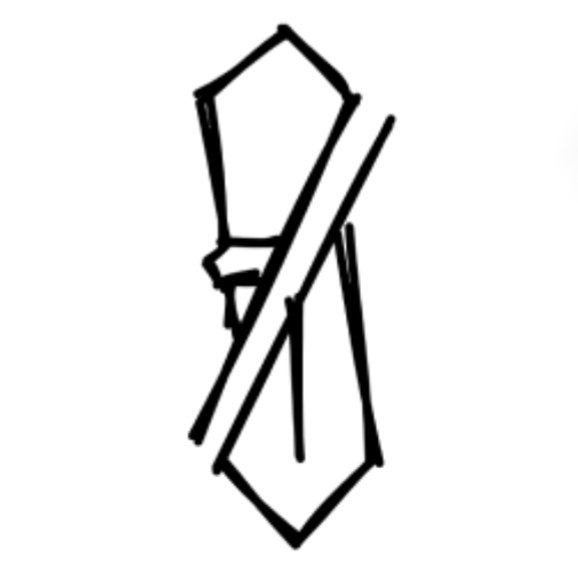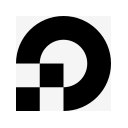IFBB 精英联盟规则:男子传统健美

IFBB 精英联盟规则:男子传统健美
李瑶瑶IFBB 精英联盟规则:男子传统健美

内容声明
本文内容来源于:IFBB FEDERATION RULES
仅供个人学习使用
中文部分为我个人翻译校对,转载请注明来源 理・型・健 —(必应 Bing 可以搜索到)
同系列其它文章:
IFBB 精英联盟规则:通用规则 | 理・型・健
IFBB 精英联盟规则:男子健身模特 | 理・型・健
IFBB 精英联盟规则:男子健体 | 理・型・健
IFBB 精英联盟规则:男子古典健体 | 理・型・健
IFBB 精英联盟规则:女子比基尼 | 理・型・健
IFBB 精英联盟规则:女子健康小姐 | 理・型・健
除此之外,如果有转译不清楚甚至有误的部分,建议去原文件自行考证,每个部分我都会附上原文件链接。
男子传统健美 Men’s Bodybuilding
官方文件:Men’s Bodybuilding Rules (2024)
摘要
男子传统健美在 1970 年于南斯拉夫贝尔格莱德举行的国际健美联合会(IFBB)国际代表大会上被正式确认为现代版的一项体育项目。
这份文件是国际健身健美联合会(IFBB) 2024年版男子健美比赛规则。它详细规定了比赛的各个环节,包括各个级别的体重限制(例如轻量级、重量级等)、预赛和决赛的流程(包括强制摆姿和自由展示环节)、评分标准(注重肌肉体积、比例、对称性、清晰度和整体美感)、服装要求(规定了泳裤的款式和颜色,禁止使用填充物和擦拭性增效剂)以及违规行为的处罚。总而言之,这份文件旨在为IFBB男子健美赛事提供一个全面、规范的运作指南,确保比赛的公平性和专业性。 附件还包含了七个强制摆姿的详细描述和图片。
文件目录与简介
目录索引(点击展开)
- 第1条: 介绍
- 第2条: 组织者对运动员和代表的责任
- 第3条: 组别
- 第4条: 轮次
- 第5条: 预赛:淘汰轮
- 第6条: 预赛:所有轮次的着装要求
- 第7条: 预赛:淘汰轮的评估与评分
- 第8条: 预赛:第一轮展示(强制姿势比较)
- 第9条: 预赛:第一轮的评分
- 第10条: 淘汰轮、第一轮和第二轮的评估
(规定造型比较) - 第11条: 决赛
- 第12条: 决赛:第二轮展示(规定造型和不定位自由展示)
- 第13条: 决赛:第二轮的评分
- 第14条: 决赛:第二轮的评估
- 第15条: 决赛:第三轮展示(个人自由展示)
- 第16条: 决赛:第三轮的评分
- 第17条: 决赛:第三轮的评估
- 第18条: 决赛:颁奖典礼
- 第19条: 决赛:总体类别和奖项
- 第20条: 决赛:团队分类结果与奖项
- 附录1: 七个强制姿势的详细描述
- 附录2: 七个强制姿势的图片
英文目录索引(点击展开)
- Article 1: Introduction
- Article 2: Responsibilities of Organizers to Athletes and Delegates
- Article 3: Categories
- Article 4: Rounds
- Article 5: Prejudging: Elimination Round
- Article 6: Prejudging: Posing Attire for All Rounds
- Article 7: Prejudging: Assessing and Scoring of the Elimination Round
- Article 8: Prejudging: Presentation of Round 1 (Comparisons in Mandatory Poses)
- Article 9: Prejudging: Scoring of Round 1
- Article 10: Assessing of the Elimination Round, Round 1 and Round 2
(Comparisons in Mandatory Poses) - Article 11: Finals
- Article 12: Finals: Presentation of Round 2 (Mandatory Poses and Posedown)
- Article 13: Finals: Scoring of Round 2
- Article 14: Finals: Assessing of Round 2
- Article 15: Finals: Presentation of Round 3 (Posing Routines)
- Article 16: Finals: Scoring of Round 3
- Article 17: Finals: Assessing of Round 3
- Article 18: Finals: The Awarding Ceremony
- Article 19: Finals: Overall Category and Award
- Article 20: Finals: Teams Classification Results and Awards
- Appendix 1: Detailed Description of the Seven Mandatory Poses
- Appendix 2: Pictures of the Seven Mandatory Poses
分组规则
第3条: 分组
3.1 分组:
男子健美世界级别比赛目前共有九个组别,如下所示:
- 雏量级:65千克及以下
- 轻量级:70千克及以下
- 次中量级:75千克及以下
- 轻中量级:80千克及以下
- 中量级:85千克及以下
- 超中量级:90千克及以下
- 轻重量级:95千克及以下
- 重量级:100千克及以下
- 超重量级:100千克以上
注1:
在国际健美联合会(IFBB)与组织者协商一致后,可以增加一个组别进行比赛。
3.2 青年男子健美世界级别比赛分组:
目前存在以下组别:
16至20岁(含):
- 一个公开组别
21至23岁(含):
- 轻量级:75千克及以下
- 重量级:超过75千克
3.3 大师男子健美世界级别比赛分组:
目前存在以下组别:
40至44岁(含):
- 轻量级:70千克及以下
- 中量级:80千克及以下
- 轻重量级:90千克及以下
- 重量级:超过90千克
45至49岁(含):
- 轻量级:70千克及以下
- 中量级:80千克及以下
- 轻重量级:90千克及以下
- 重量级:超过90千克
50至54岁(含):
- 中量级:80千克及以下
- 重量级:超过80千克
55至59岁(含):
- 中量级:75千克及以下
- 重量级:超过75千克
60至64岁(含):
- 一个公开组别
65岁及以上:
- 一个公开组别
3.4 分组要求:
- 除世界锦标赛和洲际锦标赛外,组别必须至少有3名运动员才能进行比赛。如果少于3名运动员,组别将尽可能合并。
- 大师组不会合并。
- 在世界锦标赛和洲际锦标赛中,组别必须至少有5名运动员才能进行比赛。如果少于5名运动员,组别将尽可能合并。
Article 3 – Categories
3.1 Categories:
There are nine categories in Men’s Bodybuilding world-level competitions, currently as follows:
- Bantamweight: Up to and incl. 65 kg
- Lightweight: Up to and incl. 70 kg
- Welterweight: Up to and incl. 75 kg
- Light-Middleweight: Up to and incl. 80 kg
- Middleweight: Up to and incl. 85 kg
- Super-Middleweight: Up to and incl. 90 kg
- Light-Heavyweight: Up to and incl. 95 kg
- Heavyweight: Up to and incl. 100 kg
- Super-Heavyweight: Over 100 kg
Note 1:
Upon agreement between the IFBB and the Organizer, one additional category may be opened for competition.
3.2 Junior Men’s Bodybuilding World-Level Competition Categories:
Currently, the following categories exist:
16 to 20 years of age inclusive:
- One open category
21 to & incl. 23 years of age:
- Lightweight: Up to and incl. 75 kg
- Heavyweight: Over 75 kg
3.3 Master Men’s Bodybuilding World-Level Competition Categories:
Currently, the following categories exist:
40 to & incl. 44 years of age:
- Lightweight: Up to and incl. 70 kg
- Middleweight: Up to and incl. 80 kg
- Light-Heavyweight: Up to and incl. 90 kg
- Heavyweight: Over 90 kg
45 to & incl. 49 years of age:
- Lightweight: Up to and incl. 70 kg
- Middleweight: Up to and incl. 80 kg
- Light-Heavyweight: Up to and incl. 90 kg
- Heavyweight: Over 90 kg
50 to & incl. 54 years of age:
- Middleweight: Up to and incl. 80 kg
- Heavyweight: Over 80 kg
55 to & incl. 59 years of age:
- Middleweight: Up to and incl. 75 kg
- Heavyweight: Over 75 kg
60 to 64 years of age inclusive:
- One open category
65 years of age and over:
- One open category
3.4 Category Requirements:
- Except for the World and Continental Championships, a category can only be run if there are not less than 3 athletes. If fewer than 3 athletes, categories will be combined wherever possible.
- Masters categories will not be combined.
- At the World and Continental Championships, a category can only be run if there are not less than 5 athletes. If fewer than 5 athletes, categories will be combined wherever possible.
比赛轮次
第4条: 轮次
4.1 轮次:
男子健美比赛将包括以下四个轮次:
- 预赛:淘汰赛轮次
(四个规定造型) - 预赛:第一轮
(四个规定造型和七个规定造型的对比) - 决赛:第二轮
(七个规定造型和不定位自由展示) - 决赛:第三轮
(个人自由展示—最多60秒)
- 预赛:淘汰赛轮次
(个人补充:四个规定造型比七个规定造型少了两个展背和一个侧展三头)
Article 4 – Rounds
4.1 Rounds:
Men’s Bodybuilding will consist of the following four rounds:
Prejudging: Elimination Round
(Four Mandatory Poses)Prejudging: Round 1
(Four Mandatory Poses and Comparisons of Seven Mandatory Poses)Finals: Round 2
(Seven Mandatory Poses and Posedown)Finals: Round 3
(Free Posing Routines – up to 60 sec.)
着装和油彩
第6条: 预赛:所有轮次的造型服装要求
6.1 造型服装必须符合以下要求:
参赛者须穿着单色、不透明、干净得体的赛裤。赛裤的颜色、面料、质地和款式由参赛者自行决定。赛裤须至少覆盖臀部的 ¾,前部区域必须被覆盖,赛裤的侧边宽度至少为5厘米。赛裤内不得使用任何填充物。
注1:
如果比赛在禁止穿着赛裤的国家举行,参赛者可能被要求穿着体操短裤,短裤侧边至少 15 厘米高,覆盖整个臀部和前部区域,具体要求可参见男子经典健身部分的规则。除结婚戒指外,参赛者不得佩戴鞋子、眼镜、手表、挂坠、耳环、假发、干扰性装饰物或任何人工辅助体型的工具。任何植入物或注射液导致身体其他部位或肌肉形态发生变化的行为是严格禁止的,可能导致参赛者被取消资格。
一般来说,禁止佩戴头饰,但如果参赛者所属国家的官方规则要求,或参赛者因宗教信仰原因需要佩戴头饰,可以使用不带帽檐的小而紧的帽子。该帽子应在官方运动员注册时出示,并获得指定的国际健美联合会(IFBB)官方批准。
预赛或决赛展示期间严格禁止使用道具。
6.2 美黑和身体着色规定:
- 不允许使用可擦掉的假晒黑和古铜色产品。如果晒黑液可以轻易擦掉,运动员将不被允许登台。
- 可以使用人工身体着色和自助晒黑产品。可以使用专业的比赛晒黑方法(气刷晒黑、舱内喷雾晒黑),前提是由专业公司和合格人员进行操作。
- 禁止使用闪光、亮片、金属珠光或金色着色,无论是作为晒黑乳液的一部分还是单独涂抹,无论由谁为参赛者的身体涂抹。
6.3 过度使用油类:
- 严禁在身体上过度使用油类产品;但可以适量使用身体油和保湿霜。
6.4 服装符合性:
- 国际健美联合会(IFBB)首席裁判或其指定代表有权决定参赛者的服装是否符合规则中规定的标准和审美要求。如果服装不符合这些标准,参赛者可能会被取消资格。
Article 6 – Prejudging: Posing Attire for All Rounds
6.1 The posing attire must meet the following guidelines:
Competitors will wear one-colored, opaque posing trunks which are clean and decent. The color, fabric, texture, and style of the trunks will be left to the competitor’s discretion. The trunks will cover a minimum of ¾ of the gluteus maximus. The front area must be covered and the side of the trunks should be 5 cm in width at a minimum. The use of padding anywhere in the trunks is prohibited.
Note 1:
If a contest is held in a country where posing trunks are prohibited, competitors may be obliged to wear gymnastic shorts, with at least 15 cm high sides, covering the whole gluteus maximus and all the frontal area, which are precisely described in the Men Classic Physique Section of the Rules.Except for a wedding ring, competitors will not wear footwear, glasses, watches, pendants, earrings, wigs, distracting ornamentation, or artificial aids to the figure. Implants or fluid injections causing a change in the natural shape of any other parts or muscles of the body are strictly prohibited and may result in disqualification of the competitor.
Headgear is generally prohibited, but if it is required by the official rules of the country represented by a competitor or due to the religious principles observed by a competitor, a small, tight cap with no visor may be used. This cap should be shown at the Official Athlete Registration and approved by the designated IFBB official.
The use of props during the Prejudging or Finals presentation is strictly prohibited.
6.2 Tan and Body Coloring Regulations:
- The use of tans and bronzers that can be wiped off is not allowed. If the tan comes off by simply wiping, the athlete will not be allowed to enter the stage.
- Artificial body coloring and self-tanning products may be used. Professional competition tanning methods (airbrush tanning, cabin spray tanning) may be used if applied by professional companies and qualified personnel.
- Sparkles, glitter, shiny metallic pearls, or gold coloring are prohibited whether applied as part of a tanning lotion or applied separately, regardless of who applied them on the competitor’s body.
6.3 Excessive Oil Use:
- The excessive application of oil on the body is strictly prohibited; however, body oils and moisturizers may be used in moderation.
6.4 Attire Compliance:
- The IFBB Chief Judge, or a delegate appointed by him, will have the right to make the decision if a competitor’s attire meets the criteria established in the Rules and acceptable standards of aesthetics. The athlete may be disqualified if the attire doesn’t meet these standards.
评分标准
第10条 - 淘汰轮、第一轮和第二轮(强制姿势的比较)的评估
10.1 总则
- 在评估选手体格时,评委应遵循一个例行的程序,以便对整体体格进行全面的评估。在规定造型的比较中,评委应首先关注所展示的主要肌肉群。
- 然后,评委应该从头部开始,自上而下地观察整个体格,查看每一个部位。
- 首先要看的是整体印象,然后是肌肉块的大小、均衡发展、肌肉密度和清晰度。
- 从上到下的观察顺序应包括:头部、颈部、肩部、胸部、所有手臂肌肉、躯干前部的胸肌、胸肌-三角肌连接处、腹肌、腰部、大腿、腿部、小腿和脚。
- 背部姿势的评估也应遵循相同的程序,包括:上、下斜方肌、冈下肌、大圆肌、竖脊肌、臀肌、大腿后侧的腿部二头肌、小腿和脚。
- 在比较期间,应对各个肌肉群进行详细评估,这有助于评委比较肌肉的形状、密度和清晰度,同时要记住选手整体的均衡发展。
- 强制姿势的比较至关重要,因为这些比较将帮助评委决定哪位选手在肌肉块、均衡发展、肌肉密度和清晰度方面具有卓越的体格。
- 在特殊情况下,如果选手的解剖结构与体格运动中公认的身体条件标准有很大差异(例如腹部突出、肌肉形状不自然、男性乳房发育、体脂水平过高),主裁判有权阻止该选手参赛或在任何其他展示阶段取消其资格。
10.2 男性体格的评估
- 在预赛评估中,整体形状和各个肌肉群的形状非常重要。评委应偏爱具有和谐、古典体格的选手。
- 评委应关注良好的姿势和运动风度、正确的解剖结构(包括身体框架、宽阔的肩膀、高胸部、正确的脊柱弯曲、四肢和躯干比例良好、腿部笔直,不外翻或内翻)。
- 评委还应关注良好的皮肤色泽,没有手术或其他缺陷,并且没有使用可能影响评估的物质。
- 如果选手水平接近,评委应关注上述方面的缺陷,以区分选手。
- 关于男子规定的详细描述可以在本节的附录1中找到。
第14条 - 决赛:第二轮的评估
14.1 第二轮的评估
- 本轮的评判标准与第一轮相同(参见第10条)。更多细节请参见本节的附录1。
- 然而,评委必须注意,与预赛相比,选手在决赛中可能会呈现不同的状态。
- 因此,评委必须确保本轮的评判是以“全新”的视角进行的,以确保所有选手在本轮中都根据他们的身体状况得到公平的评估。
第17条 - 决赛:第三轮的评估
17.1 第三轮将使用以下标准进行评估
- 在决赛中,评委将评估每位选手如何配合音乐展示他们的体格。
- 评委将关注一个流畅、艺术性强、精心编排的套路,其中可以包括任意数量的姿势,但必须包括规定造型。
- 选手还必须穿插其他造型,以展示其体格的肌肉发展。
- 严格禁止 “月亮” 姿势(个人补充:直腿俯身摸脚,屁股朝向裁判,展示腘绳肌),或拉扯比赛服以展示大腿内侧上部或臀大肌。
- 评委需要注意的是,在这一轮中,他们对形体和展示编排的评分各占 50%。
Article 10 – Assessing of the Elimination Round, Round 1 and Round 2 (Comparisons in Mandatory Poses)
10.1 General:
- When assessing a competitor’s physique, a judge should follow a routine procedure which will allow a comprehensive assessment of the physique as a whole.
- During the comparisons of the mandatory poses, the judge should first look at the primary muscle group being displayed.
- The judge should then survey the whole physique, starting from the head, and looking at every part of the physique in a downward sequence, beginning with general impressions, and looking for muscular bulk, balanced development, muscular density, and definition.
- The downward survey should take in the head, neck, shoulders, chest, all of the arm muscles, front of the trunk for pectorals, pec-delt tie-in, abdominals, waist, thighs, legs and calves, and feet.
- The same procedure for back poses will also take in the upper and lower trapezius, teres and infraspinatus, erector spinae, the gluteus group, the leg biceps group at the back of the thighs and calves, and feet.
- A detailed assessment of the various muscle groups should be made during the comparisons, at which time it helps the judge to compare muscle shape, density, and definition while still bearing in mind the competitor’s overall balanced development.
- The comparisons of the Mandatory Poses cannot be overemphasized as these comparisons will help the judge to decide which competitor has the superior physique from the standpoint of muscular bulk, balanced development, muscular density, and definition.
- In exceptional cases, when the anatomical structure of a competitor drastically differs from the accepted criteria of body condition in the physique sports (extended belly, unnatural shape of muscles, gynecomastia, too high bodyfat level, etc.), the Chief Judge has the right to prevent the athlete from competing or disqualify him at any other moment of his stage presentation.
10.2 Assessing the Male Physique:
- In assessing prejudging, overall shape and that of the various muscle groups is important. The judge should favor competitors with a harmonious, classical physique.
- The judge should look for good posture and athletic bearing, correct anatomical structure (including body framework, broad shoulders, high chest, correct spinal curves, limbs and trunk in good proportion, straight legs, not bandy or knock-kneed).
- The judge should also look for good skin tone with absence of surgical or other scars, spots, acne or tattoos, which the IFBB considers as a skin blemish, tidily dressed hair, well-shaped feet, and toes.
- When having difficulty in placing two or more competitors who seem to be on the same level, the judge should look for faults in those aspects listed above which will help to differentiate among the competitors.
- Detailed description of the men’s Mandatory Poses may be found in Appendix 1 to this Section.
Article 14 – Finals: Assessing of Round 2
14.1 Assessing of Round 2
- The same criteria used in judging Round 1 (see Article 10) will be used in this round. More details in Appendix 1 to this Section.
- However, the judges must be mindful of the fact that a competitor may present a different condition in the Finals compared to the Prejudging. Therefore, judges must ensure that this round is judged from a “fresh” perspective, ensuring that all competitors receive fair assessment based upon their body condition in this round.
Article 17 – Finals: Assessing of Round 3
17.1 Round 3 will be assessed using the following criteria:
In the Finals, the judges will be assessing each competitor on how well they display their physique to music. The judge will look for a smooth, artistic, and well-choreographed routine which may include any number of poses; however, the mandatory poses must be included. The competitor must also include intermittent poses so as to display the muscular development of his physique.
“Moon” poses and pulling the posing attire so as to display the top inside of the quadriceps or the gluteus maximus shall be strictly forbidden.
The judges are reminded that, during this round, they are judging 50% physique and 50% routine.
附录1:规定造型描述
附录1:七个规定造型的详细描述
1.1 男子传统健美规定造型:
前展双肱二头肌 (见图1)
- 面向裁判站立,一条腿向前约40-50厘米并稍微偏向一侧,参赛者将双臂抬至肩膀水平并弯曲肘部。
- 双手应握紧并向下转动,以便使二头肌和前臂肌肉收缩,这是此造型中主要的评估肌群。
- 此外,参赛者应尽量收缩其他肌肉群,因为裁判将评估全身形态,从头到脚。
- 裁判首先观察二头肌,寻找肌肉是否饱满、峰值明显,并注意二头肌前后部分是否有清晰分割,接着继续从头到脚的观察,查看前臂、三角肌、胸肌、胸肩结合部、腹肌、大腿和小腿的发育。
- 裁判还会评估肌肉的密度、清晰度和整体平衡。
前展背阔肌 (见图2)
- 面向裁判站立,双腿和双脚平行,间距最多15厘米,参赛者将双手(可为开掌或握拳)放在腰部下方或腹斜肌上,并展开背阔肌。
- 同时,参赛者应尽量收缩其他前侧肌群。
- 严禁参赛者拉起赛裤以展示股四头肌上部。
- 裁判应首先观察参赛者是否能够很好地展宽背阔肌,形成V字形的上身。
- 然后,裁判继续进行头到脚的检查,首先观察整体形态,再细致查看各肌群的发育情况。
侧展胸大肌 (见图3)
- 参赛者可选择任何一侧展示“更好”的臂部。
- 他将面向裁判的一侧站立,弯曲靠近裁判的手臂至直角位置,握紧拳头,另一只手抓住腕部。
- 靠近裁判的一条腿膝盖弯曲,脚尖着地。
- 参赛者接着展开胸部,并通过向上施加压力于弯曲的前臂,使二头肌尽量收缩。
- 同时,他还应收缩大腿肌肉,尤其是股二头肌群,并通过脚尖向下施压,展示收缩的小腿肌肉。
- 裁判将特别关注胸肌、肋骨弯曲、二头肌、大腿二头肌和小腿的发育,并完成从头到脚的检查。
- 在这一造型中,裁判可以从侧面观察大腿和小腿的肌肉,有助于更准确地评估它们的相对发育情况。
背展双肱二头肌 (见图4)
- 参赛者背对裁判站立,弯曲双臂和手腕,类似于前双臂弯曲造型,并将一只脚向后伸展,脚尖着地。
- 他将收缩手臂肌肉以及肩部、上背、下背、大腿和小腿的肌肉。
- 裁判首先观察手臂肌肉,然后继续进行头到脚的检查,观察多个肌群,包括颈部、三角肌、二头肌、三头肌、前臂、斜方肌、肩胛下肌、棘下肌、竖脊肌、外斜肌、背阔肌、臀肌、大腿二头肌和小腿肌肉。
- 这一造型有助于裁判评估参赛者肌肉的密度、定义度和整体平衡。
背展背阔肌 (见图5)
- 参赛者背对裁判站立,将双手放在腰部,肘部向外张开,双腿和双脚平行,间距最多15厘米。
- 他将尽可能展宽背阔肌。
- 参赛者应努力展示与背双臂弯曲造型时相反的小腿肌肉,以便裁判能够平等评估两侧小腿的发育。
- 严禁参赛者拉起赛裤以展示臀大肌。
- 裁判将寻找背阔肌的良好展开,同时也关注肌肉的密度,并再次进行头到脚的检查。
侧展肱三头肌 (见图6)
- 参赛者可选择任何一侧展示“更好”的臂部。
- 他将面向裁判的一侧站立,将双臂置于背后,可以将双手指扣住,或用后手抓住前臂腕部。
- 靠近裁判的一条腿膝盖弯曲,脚平放于地面,远离裁判的一条腿膝盖弯曲,脚尖着地。
- 参赛者将用力施压于前臂,使三头肌收缩。
- 同时,他应抬起胸部并收缩腹肌、大腿和小腿的肌肉。
- 裁判首先会观察三头肌,最后完成从头到脚的检查。
- 在这一造型中,裁判将能够侧面观察大腿和小腿的肌肉,有助于更准确地评估它们的相对发育。
前展腹部与腿部 (见图7)
- 面向裁判站立,参赛者将双手放在头后并将一条腿向前摆。
- 他接着通过略微前倾的方式收缩腹肌。
- 同时,他还应收缩前腿的大腿肌肉。
- 裁判将检查腹肌和大腿肌肉,最后完成从头到脚的检查。
APPENDIX 1: DETAILED DESCRIPTION OF THE SEVEN MANDATORY POSES
1.1 MEN’S BODYBUILDING MANDATORY POSES:
Front Double Biceps (see Figure 1)
- Standing face front to the judges, with one leg 40-50 cm forward and to the side, the competitor will raise both arms to shoulder level and bend them at the elbows.
- The hands should be clenched and turned down so as to cause a contraction of the biceps and forearm muscles, which are the main muscle groups that are to be assessed in this pose.
- In addition, the competitor should attempt to contract as many other muscles as possible as the judges will be surveying the whole physique, from head to toe.
- The judge will first survey the biceps muscles looking for a full, peaked development of the muscle, noting whether or not there is a defined split between the anterior and posterior sections of the biceps, and will continue the head-to-toe survey by observing the development of the forearms, deltoids, pectorals, pec-delt tie-ins, abdominals, thighs, and calves.
- The judge will also look for muscle density, definition, and overall balance.
Front Lat Spread (see Figure 2)
- Standing face front to the judges, with the legs and feet in-line and up to 15 cm apart, the competitor will place the open hands, or clenched fists, against, or gripping, the lower waist or obliques and will expand the latissimus muscles.
- At the same time, the competitor should attempt to contract as many other frontal muscles as possible.
- It shall be strictly forbidden for the competitor to pull up on the posing trunks so as to show the top inside of the quadriceps.
- The judge should first see whether the competitor can show a good spread of the latissimus muscles, thereby creating a V-shaped torso.
- Then the judge should continue with the head-to-foot survey, noting first the general aspects of the physique and then concentrating on the more detailed aspects of the various muscle groups.
Side Chest (see Figure 3)
- The competitor may choose either side for this pose, in order to display the “better” arm.
- He will stand with his left or right side towards the judges and will bend the arm nearest the judges to a right-angle position, with the fist clenched and, with the other hand, will grasp the wrist.
- The leg nearest the judges will be bent at the knee and will rest on the toes.
- The competitor will then expand the chest and by upward pressure of the front bent arm and contract the biceps as much as possible.
- He will also contract the thigh muscles, in particular, the biceps femoris group, and by downward pressure on his toes, will display the contracted calf muscles.
- The judge will pay particular attention to the pectoral muscles and the arch of the rib cage, the biceps, the leg biceps and the calves, and will conclude with the head-to-foot examination.
- In this pose, the judge will be able to survey the thigh and calf muscles in profile, which will help in grading their comparative development more accurately.
Back Double Biceps (see Figure 4)
- Standing with his back to the judges, the competitor will bend the arms and wrists as in the Front Double Biceps pose, and will place one foot back, resting on the toes.
- He will then contract the arm muscles as well as the muscles of the shoulders, upper and lower back, thigh, and calves.
- The judge will first survey the arm muscles and then proceed with the head-to-foot survey, looking at a wide range of muscle groups, including the neck, deltoids, biceps, triceps, forearm, trapezius, teres, infraspinatus, erector spinae, external obliques, latissimus dorsi, gluteus, thigh biceps, and calves.
- This pose will help the judge assess the quality of the competitor’s muscle density, definition, and overall balance.
Back Lat Spread (see Figure 5)
- Standing with his back to the judges, the competitor will place his hands on his waist with his elbows kept wide, with the legs and feet in-line and up to 15 cm apart.
- He will then contract the latissimus dorsi as wide as possible.
- The competitor should make an effort to display the opposite calf to that which was displayed during the back double biceps pose so the judge may assess both calf muscles equally.
- It shall be strictly forbidden for the competitor to pull up on the posing trunks so as to show the gluteus maximus muscles.
- The judge will look for a good spread of the latissimus dorsi, but also for good muscle density and will again conclude with the head-to-foot survey.
Side Triceps (see Figure 6)
- The competitor may choose either side for this pose so as to show the “better” arm.
- He will stand with his left or right side towards the judges and will place both arms behind his back, either linking his fingers or grasping the front arm by the wrist with his rear hand.
- The leg nearest the judges will be bent at the knee and the foot will rest flat on the floor. The leg farthest to the judges will be bent at the knee and the foot resting on the toes.
- The competitor will exert pressure against his front arm, thereby causing the triceps muscle to contract.
- He will also raise the chest and contract the abdominal muscles as well as the thigh and calf muscles.
- The judge will first survey the triceps muscles, and conclude with the head-to-foot examination.
- In this pose, the judge will be able to survey the thigh and calf muscles in profile, which will help in grading their comparative development more accurately.
Abdominals and Thighs (see Figure 7)
- Standing face front to the judges, the competitor will place both arms behind the head and will place one leg forward.
- He will then contract the abdominal muscles by “crunching” the trunk slightly forward.
- At the same time, he will contract the thigh muscles of the front leg.
- The judge will survey the abdominal and thigh muscles, and then conclude with the head-to-foot examination.
附录照片


官方参考照片,是入门参考,不是最高标准






















